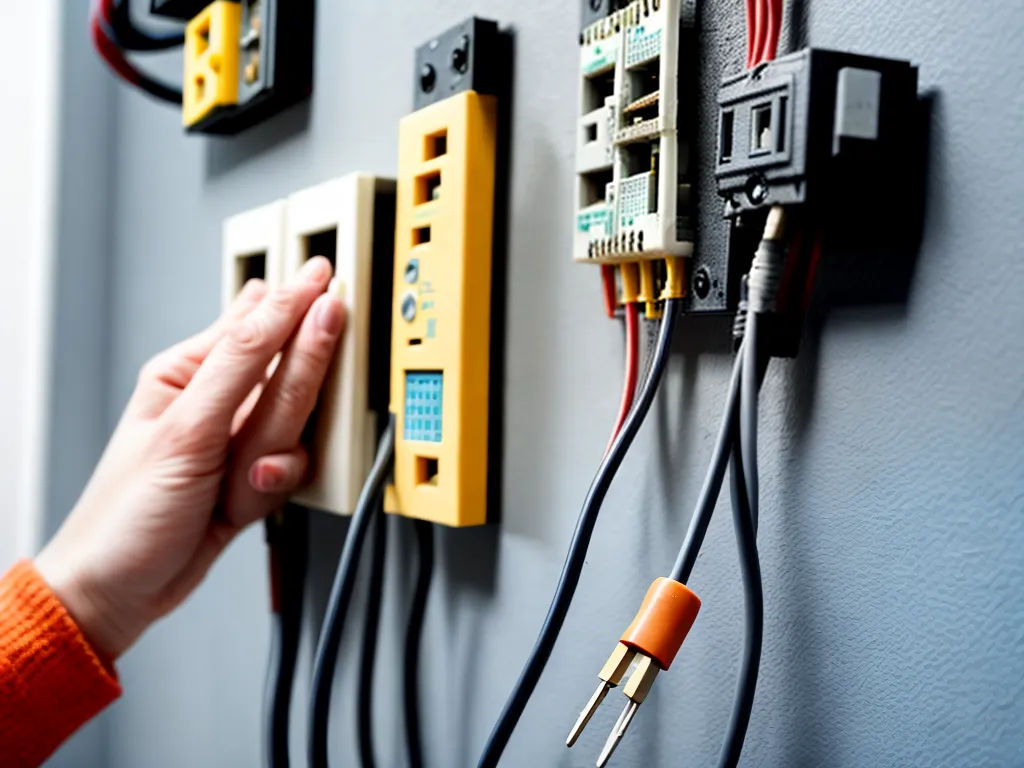
How to Safely Wire Your Home Without Hiring an Electrician
Introduction
Wiring a home can seem daunting, but with proper precautions and planning, it is possible for a non-electrician to safely install and modify electrical systems. As the homeowner, being able to do minor electrical work can save thousands of dollars in electrician fees over the years. However, working with electricity carries serious risks if not done correctly. By educating yourself, creating a plan, and following safety protocols, you can avoid hazards and feel confident tackling electrical projects in your home.
Educate Yourself on Electrical Basics
Before touching a wire, it is crucial to understand some basic electrical concepts and terminology. This knowledge will allow you to work safely and conduct projects properly. Below are some key principles to learn:
Current, Voltage, and Wattage
- Current is the flow of electrons through a conductor, measured in amps.
- Voltage is the "pressure" driving the current, measured in volts.
- Wattage indicates the rate of energy consumption, measured in watts.
Understand the voltage of your electrical system and the wattage requirements of devices you wish to install.
Series vs. Parallel Circuits
- In a series circuit, current flows through components sequentially. In a parallel circuit, current divides and flows through multiple paths. Recognize when to wire components in series or parallel.
Three-Wire vs. Four-Wire Configurations
- Most household circuits use three-wire cable: hot, neutral, and ground. But large appliances often require a four-wire connection with two hot wires.
Electrical Codes
- Consult the National Electrical Code (NEC) for wiring standards and safety requirements. Understand cable and breaker sizing, box fill calculations, and other specifications.
With knowledge of these basics, you can avoid rookie mistakes and handle electrical work intelligently. Study guides, online training courses, and books can provide more thorough electrical instruction.
Create a Detailed Wiring Plan
Careful planning is crucial when wiring a home. Rushing into electrical projects without a plan can lead to wasted time, mistakes, unsafe installations, and code violations. Follow these steps to design your wiring project:
Evaluate Your Needs
- Decide which circuits need to be added or modified. Consider where extra outlets are needed or which fixtures require individual circuits.
Choose a Main Panel Location
- The main breaker panel connects the whole system. Pick an accessible location with room for expansion.
Map Out Circuits
- Diagram each circuit, noting cable routes, outlet and switch locations, and load requirements. Include important details like wire gauge and breaker size.
Consider Future Expansion
- Build in capacity for potential additions like electric vehicle chargers, home offices, or luxury appliances.
With a detailed plan accounting for electrical load, code compliance, and future growth, you can install wiring correctly the first time. Consult permits office and have an electrician review the plan as well.
Gather the Right Safety Equipment
Electrical work can produce arch flashes, electric shocks, burns, falls, and other dangers. Possessing proper safety gear greatly reduces these risks. The most essential electrical safety equipment includes:
-
Electrical gloves - Protect hands from shocks and arcs.
-
Safety goggles - Prevent injuries from sparks and explosions.
-
Face shield - Safeguard face from flashes and debris.
-
Fire-resistant clothing - Avoid burns from arcs, sparks, and flames.
-
Insulated mats - Protect against shocks when working in damp areas.
-
Clamp meters - Test voltages safely without direct contact.
Also assemble safety equipment like warning signs, barriers, fire extinguishers, and first aid kits in case of accidents.
Work Safely on All Electrical Projects
While completing electrical projects, diligently follow vital safety precautions:
-
De-energize circuits - Turn off power and verify it is off before working.
-
Lock out and tag out - Use padlocks and warning tags to prevent accidental re-energizing.
-
Limit live work - Only work on live parts when absolutely necessary, using extreme caution.
-
Protect against arcs - Cover live parts and wear arc-rated clothing.
-
Use insulated tools - Prevent contact with energized conductors.
-
Eliminate tripping hazards - Keep cords organized and work areas clear.
-
Follow local codes - Comply with NEC and permitting requirements.
-
Inspect work thoroughly - Check for mistakes, damaged wiring, loose connections, and code violations.
By integrating proper safety protocols into all electrical work, you can avoid catastrophic mishaps. Stay humble and seek assistance if you feel unprepared for complex tasks.
Hire an Electrician When Needed
Although many electrical projects can be managed independently, in certain situations it is vital to hire a professional electrician:
-
Installing the main service panel and connecting to the utility feed
-
Upgrading service to add more amperage
-
Running wiring through finished walls or ceilings
-
Interfacing generators or solar panels with house wiring
-
Adding hot tubs, pools, or saunas
-
Rewiring old homes with outdated electrical systems
-
Troubleshooting complex issues in multi-wire circuits
Their expertise can handle complicated jobs safely and correctly. Consider soliciting an electrician's advice on your plans as well. While avoiding the labor costs of pros whenever possible, recognize when electrical work is best left to the professionals.
Conclusion
By educating yourself on electrical basics, designing a detailed plan, utilizing proper safety equipment, following code requirements, and calling an electrician when prudent, you can safely install and modify wiring in your home. This enables you to save substantially on electrician fees. However, working with electricity is inherently hazardous. Maintain a cautious mindset, only take on what you are comfortable with, and prioritize safety above all else. Thorough preparation, diligent workmanship, and smart decision-making will allow you to gain confidence in your electrical abilities while avoiding disaster.